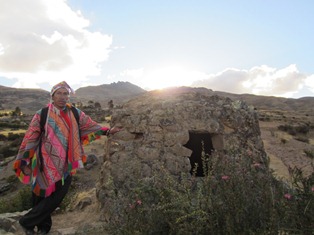Learning a language has probably been one of my longest and most strenuous challenges of all time. It is much like working out. It takes persistence and dedication to gain results. It is nothing you can measure on a day to day basis…which makes the acquisition a little frustrating. Some days flow good and other days you feel as if you have regressed. The new language can give you headaches. Learning it can discourage you and it can make you feel as if there is no hope. Now is when I tell you about myself. I love challenge, I am super competitive!
I do have some challenges that do not aid my language acquisition. My ability to concentrate has always been a challenge during my whole life. The smallest background noises will absolutely devour my focus (Bloody dogs! May the fleas of a thousand camels invest your armpits). More than one event happening at once causes fragmented focus. For example, we went for a meeting with Arariwa and during this meeting there was a child and adults running in and out of the office, and the odd telephone interruption. If there is anything that will create a challenge when you understand the language already this would be it. These challenges when understanding a small percent of what is being communicated to you makes for one of the largest brain stimulations ever possible, especial in a society that is so much different than what you have been accustomed to throughout your entire life.
Having so much difficulty in the language has caused me to feel a little incompetent with my work. At times I have felt very discouraged and unable to help when visiting the communities we work with. I do not enjoy this feeling at all. This has caused frustration and a game plan. I realized that majority of the fluent Spanish speakers are leaving shortly. Therefore, it is very important to pick up my studies and efforts to keep the momentum of our projects.
The past two weeks I have begun to intensely study the new language. My day starts with the memorization of a flashcard set from the website http://www.spanishdict.com/flashcards. This website is a great way to learn new vocabulary which I find very useful is day to day conversations. I then eat breakfast, read a Spanish article, speak with Yovana and begin my daily activities for NeVo. Our activities include much conversation with community members about our progress and our projects plans in the future. After the day’s work, I go to my Spanish class and practice with my teacher for 1.5 hours straight. Just when you think this is enough, following Spanish class I go to the gym where I have now made a few friends and we talk in Spanish and some nights I close with a movie in Spanish.
I have now started a language exchange with a local anthropologist who wants to learn English. We get together twice a week; one day pure Spanish and the other in pure English. This is a challenge for both of us and a great way to expand our abilities. I first met her when she came into the NeVo house to give a lecture about the history of Peru, its people and its culture. When I first met her I did not understand anything and I had several failed attempts trying to speak. When we met, our first conversation was 2 hours in nothing but Spanish. I surprised myself. With all this practice I have become much more confident in my ability and I feel as if I can contribute much more the success of the projects of Nexos Voluntarios.
Another Tongue Twister!
¡Compadre, cómpreme un coco!
¡Compadre, coco no compro!, porque el que poco coco come, poco coco compra y como yo poco coco como, poco coco compro!









